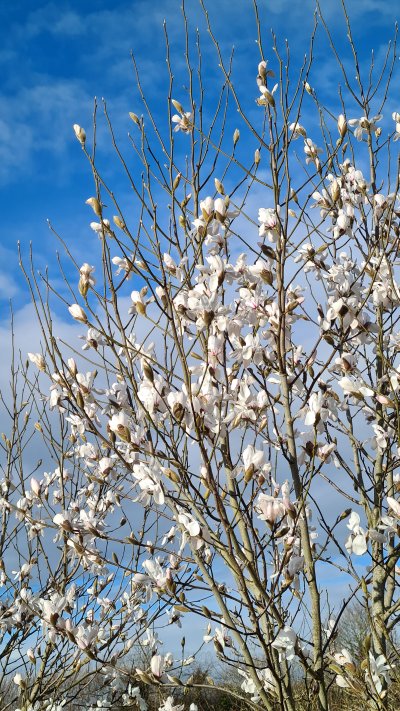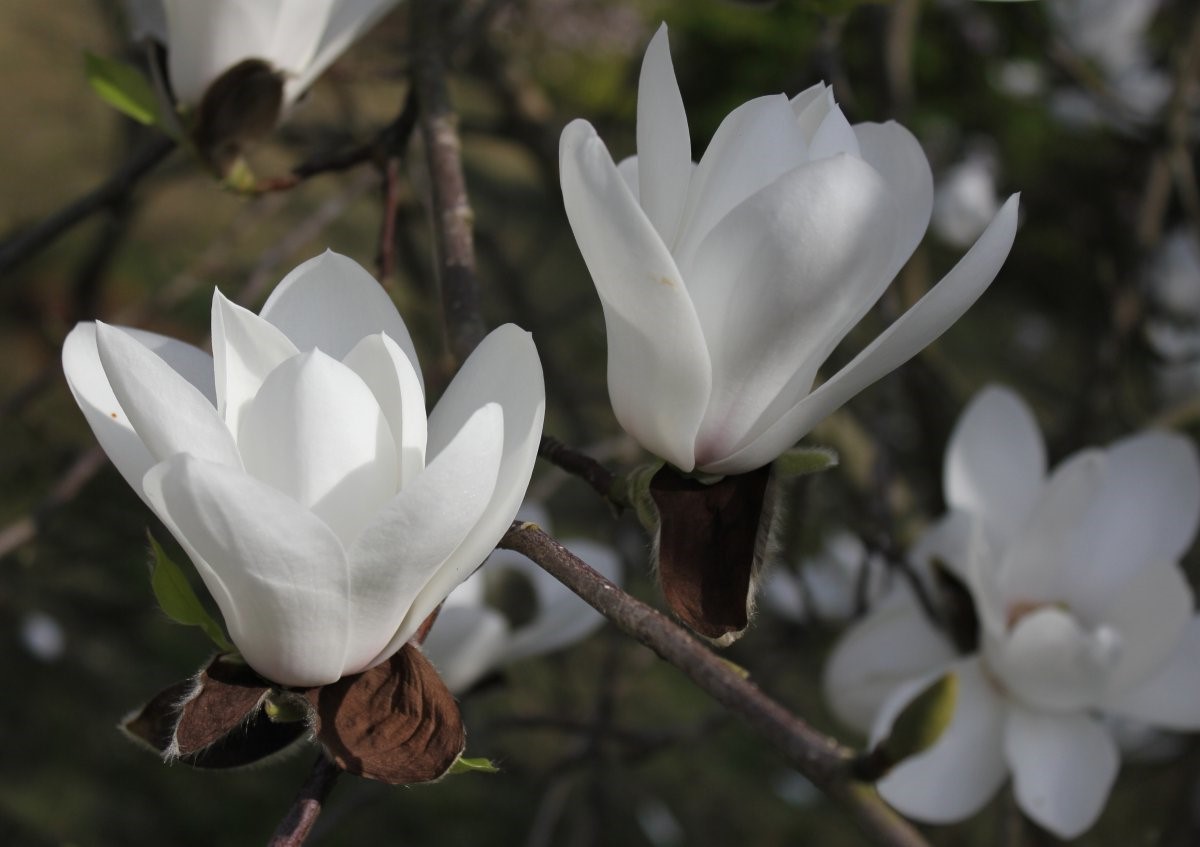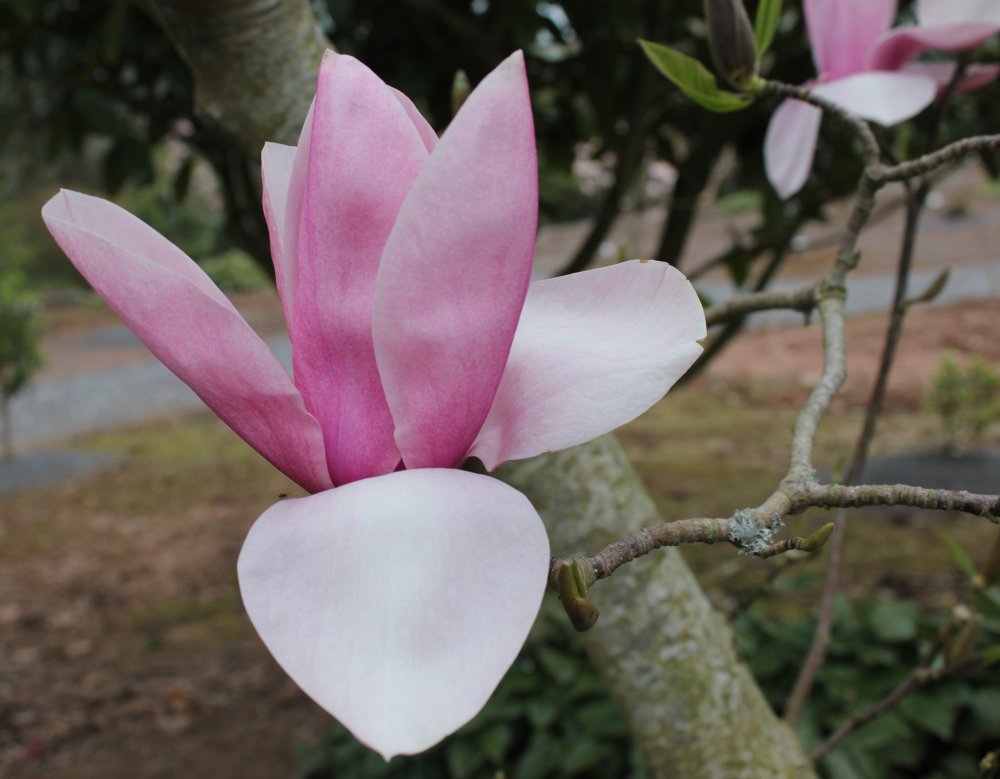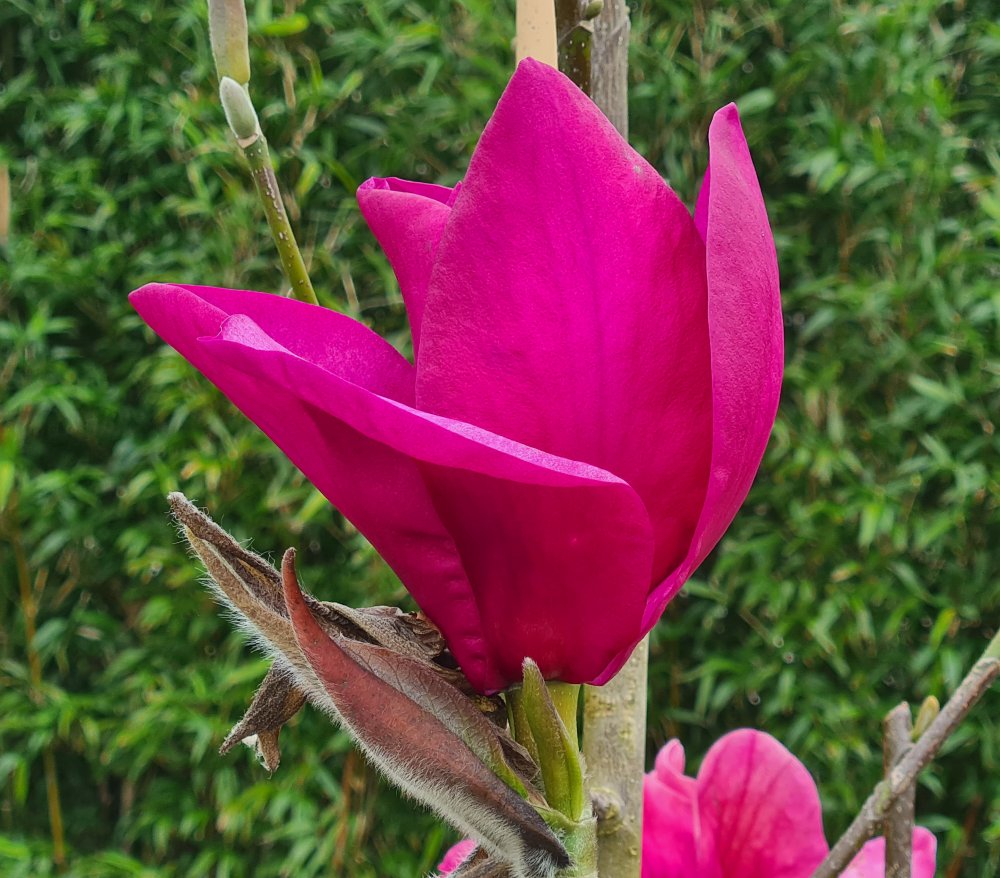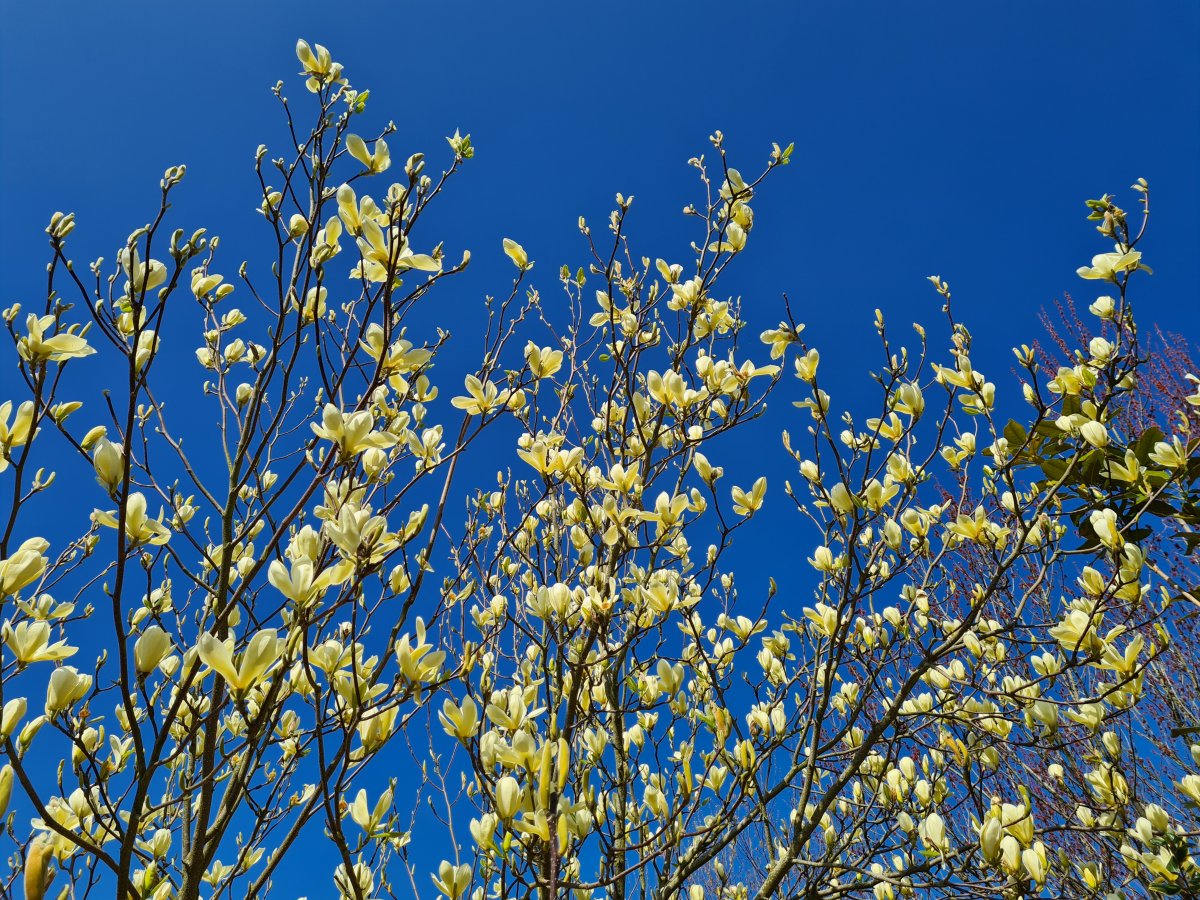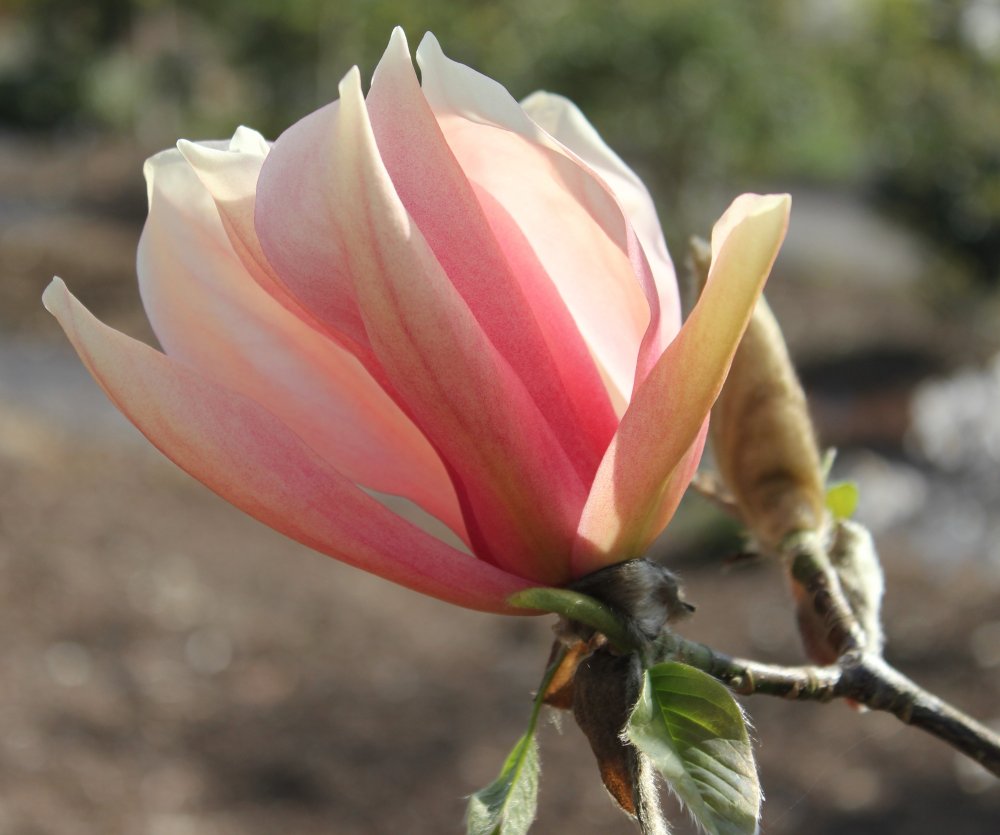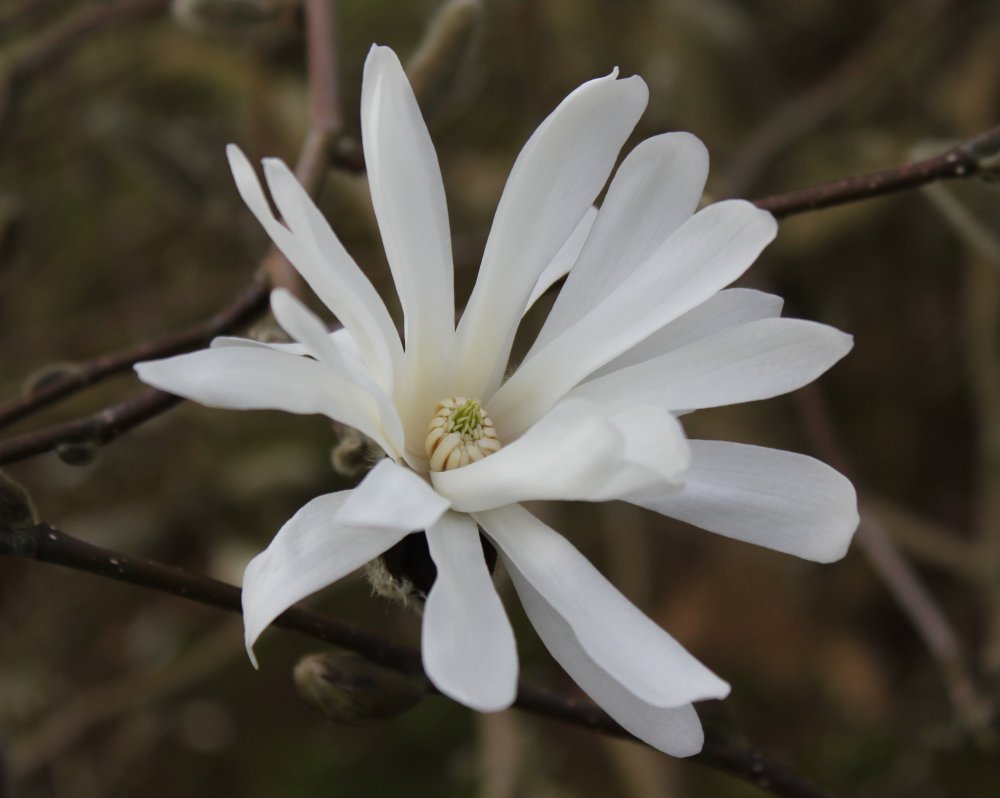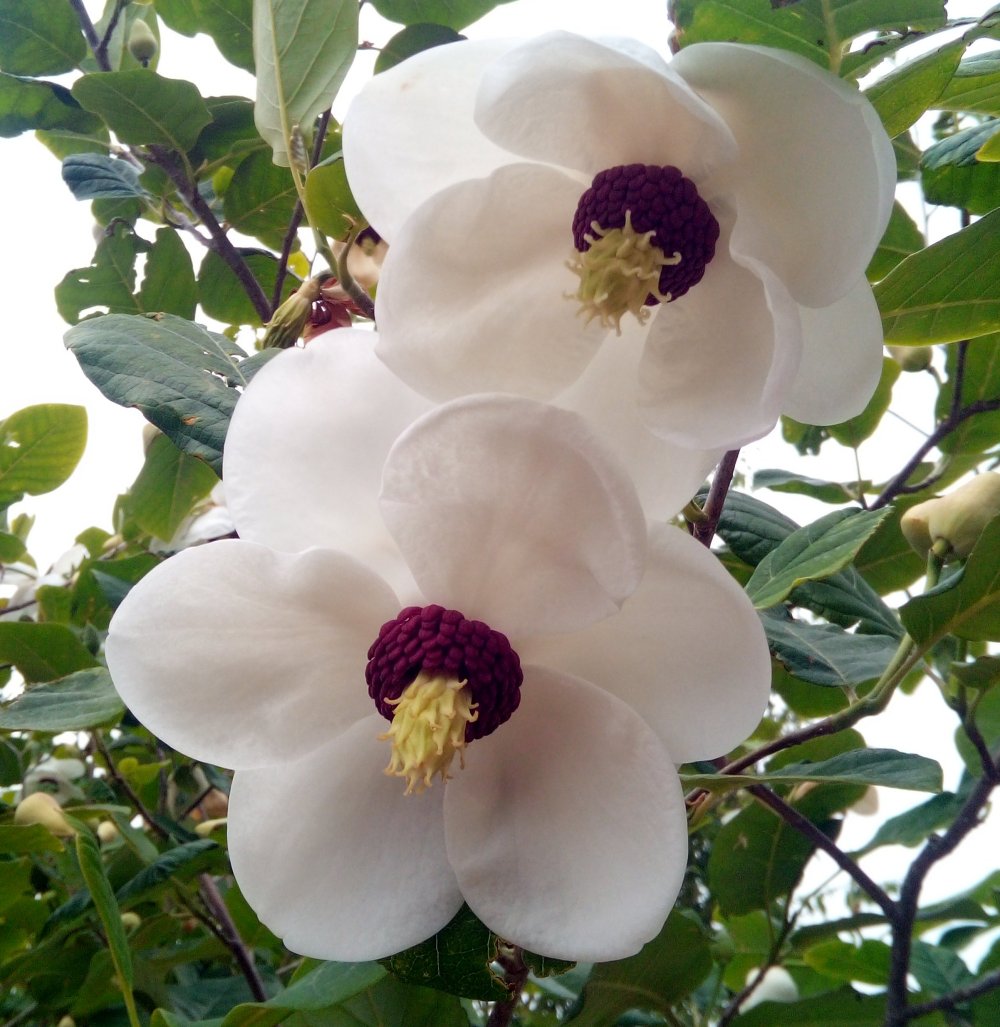|
Magnolia zenii 'Pink
Parchment' |
Many of the first large-flowered hybrids came from New Zealand, where the beauty of M. campbellii inspired some fabulous new cultivars which were ground-breaking in their day, whilst notable breeders in the USA worked with hybrids from the native M. acuminata to bring into cultivation a range of yellow flowered magnolias, as well as introducing a range of unique peachy shades. More recently further breeding and selection in Europe has ensured that the trees perform to their full potential in the European climate. The explosion of modern cultivars therefore sees an unprecedented array of magnolias to choose from, giving options with flowers large or small, in the widest range of colours imaginable. It also guarantees the reliability of flowering and most importantly, the ability to flower from a young age. The latter trait is enhanced because they are grafted. Thus it is no longer necessary to wait over 25 years for your Magnolia to flower; indeed many of these have already flowered on the nursery. It is possible that once planted, it will take them a season or two to settle down and flower to their full potential. However, they have the capability to flower and will do so profusely as soon once they are established into their new site. Our entire Magnolia collection is planted through our gardens and arboretum here in an exposed, wet corner of Somerset. Our experience with growing them over time in often challenging conditions enables us to recommend the best cultivars to achieve your criteria. These magnolias are totally cold hardy and foliage of established plants that is blackened by a late frost will soon sprout again in an incredibly resilient manner. However, the flowers can be spoilt by frost. Thus, in colder areas it may be wise to choose a later flowering varieties. In the past I would have suggested that the M. campbellii forms are best considered only in Cornwall and favoured Western locations, but climate change seems to be making it possible to grow even these selections from the pure species successfully in many other places too. Nevertheless, a major focus of modern breeders has been to achieve the flower shape and size traditionally associated with the magnificent Asiatic species, but that are more robust and weather tolerant. This is such an exciting time to be planting magnolias, because the range of colours available is simply exceptional. Magnolias are traditionally considered to have a preference for acid soil, however the structure of the soil is more important than the pH. They hate to dry out in the summer, but it's also important that the soil drains adequately in winter too. They are naturally comparatively shallow rooted, so on heavier, wetter soils, they respond really well to mound planting, whilst a thick mulch of quality organic matter in spring can be appreciated by plants in drier positions. See our Planting Tips for information as to our recommend planting method. Moving on then to how we sell our magnolias; the key principle here as always is that these are all propagated by ourselves, here on site, using material collected from our own plants. In many cases, larger specimens are available, most of which have already flowered. Sometimes we have a choice of sizes, both big and small. Other times it's only big or only small. In most cases there are only a few of each cultivar because we have such a huge collection. Therefore it is impossible within the time I have available to indicate exact size availability on each cultivar. Suffice it to say therefore that the smallest magnolias that we offer are 2 year olds in 3 litre pots, whilst the largest are magnificent semi-mature specimens and of course there is every option in-between. If planting in September or late spring in a kind site, it is often possible to establish a smaller plant such as the youngsters in 3 litre pots. Although size and shape varies according to the characteristics of the cultivar, these are typically around 1m tall. The more shrubby sorts are likely to be shorter and may well be branched, but at this age, the more tree like cultivars tend to fundamentally be a single stem. The new crop of this youngest (therefore cheapest) size will be available in the autumn. Nevertheless, our experience is that
magnolias establish much more
reliably from larger plants. Where older plants are available,
they will be grown naturally in the open ground; the benefits of which
are described on the About
Us page. Given their greater age, they will inevitably be more
costly. However, they will be larger,
will have more side branching and be more substantial overall.
When planting through the winter, I would strongly recommend these
older, more robust plants which are acclimatised to the weather. |
|
Magnolia campbellii 'Piet
van Veen' |
